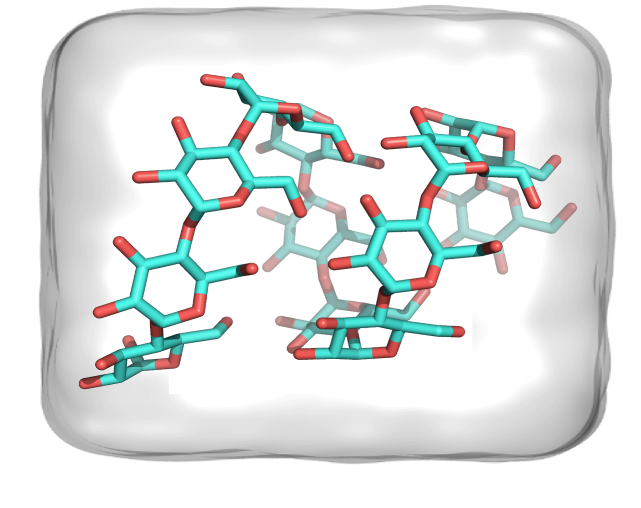Insights into the electronic and structural properties of cellulose and amylose: A comparative force field study
Authors:
Esmat Mohammadi1, Justin Lemkul2
Affiliation:
1-Department of Chemical Engineering, Virginia Tech, Blacksburg, VA 24061
2-Department of Biochemistry, Virginia Tech, Blacksburg, VA 24061

Description:
Cellulose and amylose are fundamental biopolymers with diverse biotechnology andmaterials science applications. Understanding their structural, dynamical, and solvationproperties at the molecular level is crucial for harnessing their potential. Here, we employedmolecular dynamics (MD) simulations to explore the behavior of cellulose and amylose inaqueous environments. Our simulations employed both nonpolarizable and polarizable forcefields to gain insights into their solvation and structural characteristics. Our investigation ofsolvation behavior focused on several key aspects, including the radial distribution function,solvent-accessible surface area, hydrogen bond analysis, and the calculation of the number ofsolvent molecules within the first and second hydration shells. By comparing the results obtainedfrom nonpolarizable and polarizable force fields, we aimed to uncover the impact of electrostaticinteractions on the solvation of cellulose and the helical structure of amylose. Furthermore, weperformed structural analysis, such as evaluating the evolution of the radius of gyration, end-to-end distances, and dihedral angles to assess the conformational behavior of these biopolymersduring the simulations. Doing so allowed us to probe the dynamic behavior of cellulose andamylose as a function of the different force fields. Furthermore, employing polarizable forcefields yielded a detailed characterization of the electric fields acting within and around celluloseand amylose. In general, the incorporation of polarization effects within the force field provideda more precise depiction of the interactions occurring between these biopolymers and thesurrounding solvent molecules.
Publications:
- Esmat Mohammadi, Justin Lemkul; Insights into the electronic and structural properties of cellulose and amylose: A comparative force field study; Biophysical Journal, 2025
Tags:
Atomistic simulation Biopolymers Carbohydrates CelluloseRelated Chronicles:
Files:
| File Name | File Description | File Type | File Size | File URL |
|---|---|---|---|---|
| Abstract | 60.11 KB | Login to download |